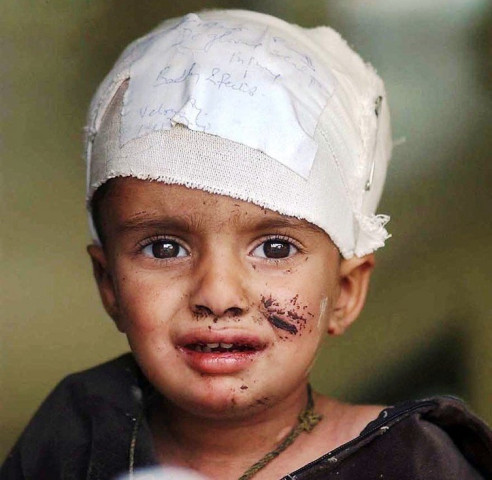Earthquake 2005: Billion-dollar question
Post-Margalla Towers and Awaran, the reality that Pakistan cannot manage such disasters stares back.

Post-Margalla Towers and Awaran, the reality that Pakistan cannot manage such disasters stares back. PHOTO: ERRA.PK
The October 8, 2005 earthquake that hit 30,000 square kilometres area forced the international community to devise an elaborate plan in its aftermath. The temblor devastated eight districts, four of Khyber-Pakhtunkhwa (KP) and four of Azad Kashmir (AJK).
The National Disaster Management Authority (NDMA) distanced itself from the October 5 earthquake and shifted the onus of responsibility onto the shoulders of the Earthquake Reconstruction and Rehabilitation Authority (ERRA).
Member, Risk and Disaster Reduction, of NDMA Muhammad Idrees denied reports that there were predictions about the Awaran earthquake. “There is no such science which can tell us when an earthquake will hit the fault-line area. There are a number of fault lines in Pakistan and we cannot predict earthquakes with certainty,” he told The Express Tribune, adding that the Awaran earthquake resulted in lesser casualties because it is a less populated area.
According to him, the NDMA has now devised a plan comprising 118 projects, and $1 billion are required to execute these projects to make Pakistan disaster resilient in the next 10 years in light of the Hyogo Framework for Action (HFA). HFA is a 10-year plan to make the planet safer from natural hazards. It was endorsed by the UN General Assembly in the Resolution following the 2005 World Disaster Reduction Conference.

At this juncture of retrospect, Director General Planning ERRA Brigadier Pervez Hayat Niazi told The Express Tribune that out of 14,513 projects, the body has executed 9,543 projects during the last eight years. The ERRA has completed 69% of its work on the assigned projects,
Idrees said the NDMA was set up following the October 2005 earthquake. “Though the authority’s main purpose is to work before, during and post disaster scenarios, the NDMA is not taking any interest in ERRA’s projects,” he added.
Incomplete – The new Balakot city project
While ERRA may have had some headway in its projects, the major project of the new Balakot city is incomplete and stalled. Balakot suffered massive destruction and is on the fault-line which means it is susceptible to earthquakes.
The ERRA requires Rs30 billion immediately to complete the remaining schools destroyed in 2005. A project for a new Balakot, intended to house 45,000 people who had suffered loss in 2005, was intended to be completed with Rs13 billion. But the project could not be completed; till now only 19% work has been possible on this project. Niazi explained that this was purely a political issue and should be dealt with the masses. The locals of Balakot are not ready to be relocated to Bakrial where this new city was planned to be built. In this situation, the ERRA cannot confront the masses unless the government steps in. Rs80 billion are immediately required for the incomplete projects, he added. So far the ERRA has spent Rs72 billion on housing and Rs24 billion on rebuilding educational buildings.
8 years later...
Painful images of injured people, Margalla Towers split in two, headlines announcing more dead by the minute and a nation coming together are still fresh in our minds. As nine years pass by, one would have hoped that the 73,000 lives lost would have jolted Pakistan into action and led to better preparation for such disasters. Awaran district in ruins tells us that sadly we learnt too little and didn’t rebuild enough.
Published in The Express Tribune, October 8th, 2013.


















COMMENTS
Comments are moderated and generally will be posted if they are on-topic and not abusive.
For more information, please see our Comments FAQ